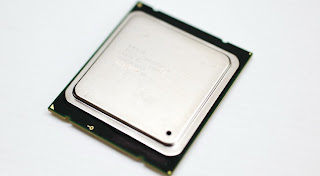Now that Intel has launched its first desktop processors based on the high-performance Sandy Bridge-E architecture, the chip maker is racing to get out the Xeon version of these CPUs and the first benchmarks showing the performance of such an 8-core SKU have recently made their way to the Web.
The chip is question is actually an engineering sample processor based on the Sandy Bridge-EP core and its performance was put to the test in both 3DMark 11 and CineBench R11.5.
In both of these benchmarks, the Intel eight-core CPU managed to outperform its desktop counterpart by quite a large margin, as the graphs put together by HardwareLuxx go to show.
From what we can tell, the ES processor used for these tests has a base frequency of 3.11GHz and Hyper-Threading seems to be working, but we don’t know if Turbo Core was enabled.
Intel’s eight-core Sandy Bridge-EP processors will be released into the Xeon E5 CPU line and according to a recent report will be based on a new stepping of this core that resolves the VT-d bug present in the current revision of the CPU.
Besides the eight computing cores, Intel's Xeon E5 CPUs can also pack a tri- or quad-channel memory controller, up to 20MB of Level 3 cache memory, 2 QPI links, 40 PCIe Gen3 lanes, and four DMI 2.0 lanes.
To accommodate all the new hardware logic, the thermal envelope of the CPU was raised from 130W in the current Sandy Bridge-E desktop CPUs to 150W.
Right now we don’t know when Intel will start selling these eight-core processors, but the chip maker said recently that it has already starting sampling Xeon E5 chips to select number of cloud and HPC computer vendors, with mass availability expected in Q1 of 2012.



 11/27/2011 08:44:00 PM
11/27/2011 08:44:00 PM
 dannzfay
dannzfay

















